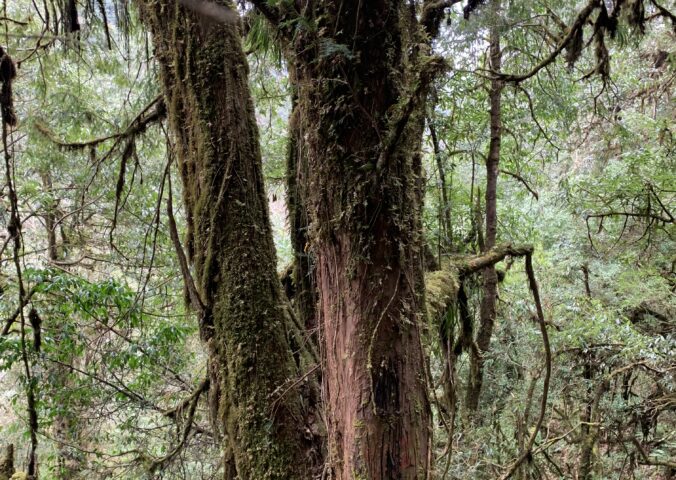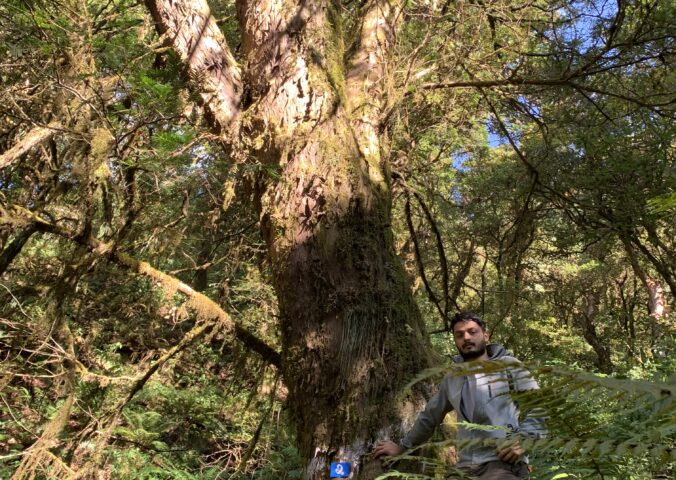About
The East Himalayan Yew is a rare conifer found in Nepal, Bhutan, Northeast India, and Southwest China mountainous regions. This resilient tree is adapted to thrive in high-altitude forests’ damp, acidic soils, enduring some of the most challenging climatic conditions. Beyond its ecological importance and aesthetic beauty, the East Himalayan Yew is vital for its medicinal properties; it produces taxol, a crucial compound used in cancer therapies.
While robust, East Himalayan Yew is vulnerable due to its narrow range and specific ecological needs. This tree’s bark and needles are highly prized for their medicinal properties, particularly their taxol content, an essential anti-cancer compound. Such high demand has led to intense pressure on its wild populations.
The East Himalayan Yew is one of several species in the genus Taxus recognised for its medicinal and ornamental values. Despite its importance, it is threatened by overexploitation and habitat loss as its native forests are increasingly encroached upon for agriculture and urbanization.
Conservation initiatives are vital for the survival of the East Himalayan Yew. It is listed as Endangered on the IUCN Red List, indicating severe population declines and highlighting the need for immediate and effective conservation measures. The future of this species hinges on robust legal protection, sustainable management practices, and efforts to cultivate it in botanical gardens and arboreta to mitigate the extraction pressure from natural habitats.
- Order: Pinales
- Family: Taxaceae
- Trend: decreasing
- Size: 10-20m (?)
EDGE Score
Distribution
The East Himalayan Yew is predominantly found in the moist, temperate forests of the Eastern Himalayas. Its range extends across several countries, including Nepal, Bhutan, Northeast India, and parts of Southwest China. In India, it is particularly prevalent in the states of Arunachal Pradesh, Sikkim, and West Bengal. The species also stretches into northern Myanmar and parts of Vietnam, following the mountainous terrains that provide its preferred cool and shaded environments.
This yew thrives at elevations typically ranging from 1,800 to 3,500 meters above sea level, often on steep, north-facing slopes. The tree favors moist, well-drained soils, which are common in these high-altitude forested regions. Its distribution is closely tied to these specific climatic and soil conditions, making it a characteristic species of the Eastern Himalayan forest ecosystems.
Habitat and Ecology
The East Himalayan Yew thrives in the humid, temperate forests of the Eastern Himalayas, a region characterized by substantial rainfall and cool climates. This species is predominantly found at elevations ranging from 1,800 to 3,500 meters, where it enjoys the sheltered conditions provided by dense forest canopies. The yew favours well-drained, acidic soils, which are typical of the forest floors in these mountainous areas.
Ecologically, the East Himalayan Yew plays a critical role in its environment. It is a valuable source of cover and food for local wildlife, with birds particularly drawn to its seeds encased in fleshy, red arils. These seeds are dispersed primarily by avian species, aiding in the natural regeneration of the yew. The tree is also a critical species in maintaining the hydrological balance of its habitats, helping to stabilize soil and conserve moisture.
Reproductively, the East Himalayan Yew is dioecious, with separate male and female plants. The female trees produce the conspicuous red arils from late summer into autumn, which, aside from their ecological role, are also noted for their striking appearance against the dense green foliage. The reproductive success of this species is closely tied to its specific habitat conditions, which are increasingly threatened by environmental changes and human activities.




